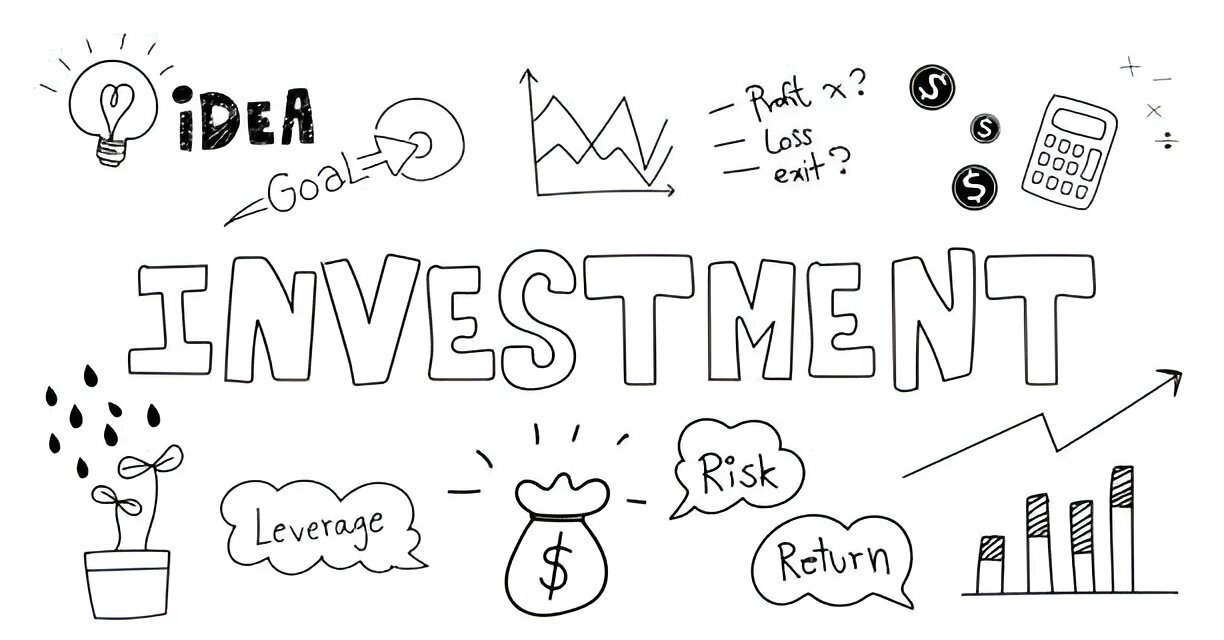Understanding Unemployment Insurance: Your Comprehensive Guide to Benefits, Eligibility, and Application Process
Navigating the world of unemployment insurance can feel overwhelming, especially when faced with unexpected job loss. However, understanding your rights and benefits is essential for financial stability during uncertain times. This comprehensive guide will demystify unemployment insurance, equipping you with the knowledge you need to access much-needed support. From determining your eligibility to navigating the application process, we’ll break down the critical components that affect your benefits. Whether you’re a first-time applicant or seeking updates on changes to the system, we’ve got you covered. Arm yourself with insights that will empower you to take control of your situation and ensure you receive the assistance you deserve. Join us as we explore the ins and outs of unemployment insurance, helping you step confidently into this crucial next phase of your career journey.
What is Unemployment Insurance?
Unemployment insurance (UI) is a government-provided benefit designed to offer financial assistance to individuals who have lost their jobs through no fault of their own. This system provides temporary income support to eligible workers, helping them cover essential living expenses while they search for new employment. The concept of unemployment insurance was established to provide a safety net for the workforce, ensuring that job loss does not lead to immediate financial ruin.
The origins of unemployment insurance can be traced back to the early 20th century, with the first formal systems appearing in Europe. The United States introduced its own version of unemployment insurance in 1935 as part of the Social Security Act. This program was created in response to the widespread economic hardship caused by the Great Depression, with the goal of stabilizing the economy and supporting workers in times of need.
Today, unemployment insurance is a well-established and vital component of social safety nets in many countries. It provides a crucial lifeline for millions of workers every year, helping them maintain financial stability and dignity as they navigate the challenges of job loss and transition.
Importance of Unemployment Insurance
The importance of unemployment insurance cannot be overstated, particularly in times of economic uncertainty. For individuals who have lost their jobs, this financial assistance can make a significant difference in their ability to meet basic needs such as housing, food, and healthcare. By providing a temporary source of income, unemployment insurance helps to mitigate the immediate financial impact of job loss and allows individuals to focus on finding new employment without the added stress of financial insecurity.
Unemployment insurance also plays a critical role in stabilizing the economy during periods of high unemployment. When large numbers of workers are laid off, consumer spending tends to decrease, which can lead to a downward spiral of reduced demand, further job losses, and economic contraction. By providing income support to unemployed workers, unemployment insurance helps to sustain consumer spending and prevent deeper economic downturns.
Furthermore, unemployment insurance contributes to the overall health of the labor market by encouraging job search and mobility. The temporary nature of benefits ensures that recipients remain motivated to find new employment, while the financial support allows them to take the time needed to find a job that matches their skills and experience. This, in turn, leads to better job matches and a more efficient labor market overall.
Eligibility Criteria for Unemployment Benefits
Determining eligibility for unemployment benefits is a crucial first step in accessing this vital support. While specific requirements can vary by jurisdiction, there are several common criteria that applicants must meet to qualify for benefits. Understanding these criteria can help you determine whether you are eligible and what steps you need to take to apply.
One of the primary eligibility requirements is that you must have lost your job through no fault of your own. This typically means that you were laid off due to economic reasons, such as a company closure or downsizing, rather than being fired for misconduct or voluntarily quitting. In some cases, individuals who quit their jobs for compelling personal reasons, such as health issues or family emergencies, may also be eligible for benefits, but these situations are often assessed on a case-by-case basis.
Another key eligibility criterion is that you must have earned a minimum amount of wages during a specified base period prior to becoming unemployed. The base period is typically defined as the first four of the last five completed calendar quarters before you filed your claim. This requirement ensures that only individuals with a sufficient work history and attachment to the labor market receive benefits.
Additionally, to be eligible for unemployment benefits, you must be able, available, and actively seeking work. This means that you must be physically and mentally capable of working, ready to accept suitable employment if offered, and actively engaged in job search activities. Many unemployment insurance programs require recipients to regularly report their job search efforts and may mandate participation in reemployment services or training programs.
Types of Unemployment Insurance Benefits
Unemployment insurance benefits come in various forms, each designed to address different circumstances and needs of unemployed workers. Understanding the different types of benefits available can help you determine which ones you may be eligible for and how they can support you during your period of unemployment.
The most common type of unemployment insurance benefit is regular unemployment compensation (UC), which provides temporary income support to eligible workers who have lost their jobs through no fault of their own. These benefits are typically paid on a weekly basis and are intended to replace a portion of the recipient’s lost wages. The duration of regular UC benefits varies by jurisdiction but generally ranges from 12 to 26 weeks.
In addition to regular UC benefits, there are several other types of unemployment insurance programs that may provide additional support in certain situations. For example, extended benefits (EB) may be available during periods of high unemployment, offering additional weeks of benefits to individuals who have exhausted their regular UC entitlement. The availability and duration of EB are typically determined by state and federal regulations.
Another type of unemployment insurance benefit is the Pandemic Unemployment Assistance (PUA) program, which was introduced in response to the COVID-19 pandemic. PUA provides benefits to individuals who are not eligible for regular UC, such as self-employed workers, gig economy workers, and individuals who have exhausted their regular UC and EB benefits. While PUA was a temporary program, it highlighted the need for flexible and inclusive unemployment insurance systems that can adapt to changing economic conditions.
How to Apply for Unemployment Insurance
Applying for unemployment insurance can seem daunting, but understanding the process and gathering the necessary information in advance can make it much more manageable. The application process typically involves several steps, including filing a claim, providing documentation, and certifying your eligibility. By following these steps and being prepared, you can increase your chances of a smooth and successful application.
The first step in applying for unemployment insurance is to file a claim with your state’s unemployment insurance agency. This can usually be done online, by phone, or in person at a local office. When filing your claim, you will need to provide information about your employment history, including the names and addresses of your previous employers, the dates of your employment, and your earnings. Be sure to have this information readily available to avoid delays in processing your claim.
Once you have filed your claim, you will need to provide documentation to verify your eligibility. This may include proof of your identity, such as a driver’s license or Social Security card, as well as documentation of your Understanding Unemployment Insurance: Your Comprehensive Guide to Benefits, Eligibility, and Application Process
What is Unemployment Insurance?
Unemployment insurance is a government-provided benefit designed to offer temporary financial assistance to individuals who have lost their jobs through no fault of their own. This program is a lifeline for millions of people, helping them stay afloat while they search for new employment opportunities. Typically funded through employer taxes, unemployment insurance aims to stabilize the economy by maintaining consumer spending during periods of high unemployment.
The primary goal of unemployment insurance is to provide workers with some level of income security during the transition period between jobs. This system not only helps individuals meet their daily needs but also ensures that the broader economy does not suffer from a sudden drop in consumer demand. By maintaining a steady flow of income, unemployment insurance helps mitigate the negative impacts of job losses on households and communities.
In addition to providing financial support, unemployment insurance programs often offer various services to help individuals return to work. These may include job training, resume writing assistance, and job placement services. By offering these resources, unemployment insurance programs aim to reduce the duration of unemployment and improve the overall efficiency of the labor market.
Importance of Unemployment Insurance
The importance of unemployment insurance cannot be overstated, particularly in times of economic downturns. When businesses face financial difficulties and are forced to lay off employees, unemployment insurance serves as a critical safety net. It helps to cushion the blow for affected workers and their families, preventing them from falling into poverty or financial ruin.
Beyond individual benefits, unemployment insurance plays a crucial role in the broader economy. During periods of high unemployment, consumer spending tends to decline, leading to further economic contraction. Unemployment benefits help to maintain purchasing power, ensuring that money continues to flow through the economy. This, in turn, helps to stabilize businesses and can even prevent further job losses.
Moreover, unemployment insurance can have a positive impact on mental health and well-being. The stress of losing a job can be overwhelming, and the financial uncertainty can exacerbate feelings of anxiety and depression. Knowing that there is a safety net in place can provide some peace of mind, allowing individuals to focus on their job search and professional development.
Eligibility Criteria for Unemployment Benefits
Determining eligibility for unemployment benefits is a critical first step in accessing this support. While specific criteria can vary by state, there are some general requirements that most applicants must meet. Understanding these criteria is essential for ensuring that you receive the benefits you are entitled to.
One of the primary eligibility requirements is that you must have lost your job through no fault of your own. This means that if you were laid off due to economic reasons, such as company downsizing or closure, you are likely eligible for benefits. However, if you were fired for misconduct or if you voluntarily quit your job without a valid reason, you may not qualify for unemployment insurance.
Another important criterion is the requirement to have earned a minimum amount of wages during a specified base period. This base period typically consists of the first four of the last five completed calendar quarters before you filed your claim. The exact wage requirement can vary by state, but it generally ensures that only individuals with a sufficient work history are eligible for benefits.
Additionally, you must be actively seeking work and available to accept a suitable job offer. This means that you must be making a genuine effort to find new employment, which may include applying for jobs, attending interviews, and participating in job search activities. Failure to demonstrate a commitment to finding work can result in the denial of benefits.
Types of Unemployment Insurance Benefits
Unemployment insurance benefits come in several forms, each designed to address different circumstances and needs. Understanding the various types of benefits available can help you determine which ones you may be eligible for and how they can best support you during your period of unemployment.
Regular unemployment benefits are the most common form of assistance and are available to individuals who meet the standard eligibility criteria. These benefits provide temporary financial support to help cover basic living expenses while you search for new employment. The duration and amount of regular benefits can vary by state, but they typically last for up to 26 weeks.
In addition to regular benefits, there are also extended benefits programs that provide additional weeks of support during periods of high unemployment. These programs are often triggered when a state’s unemployment rate reaches a certain threshold, and they can provide an extra 13 to 20 weeks of benefits. Extended benefits are particularly valuable during economic downturns when job searches may take longer.
Another important type of benefit is the Pandemic Unemployment Assistance (PUA) program, which was introduced in response to the COVID-19 pandemic. This program expanded eligibility to include self-employed individuals, gig workers, and others who were not traditionally covered by regular unemployment insurance. While the PUA program was temporary, it highlighted the need for more inclusive support mechanisms in times of crisis.
How to Apply for Unemployment Insurance
Applying for unemployment insurance can seem daunting, but understanding the process can help you navigate it more smoothly. The application process typically involves several steps, including gathering necessary documentation, completing an application, and submitting it to the appropriate state agency. Being prepared and organized can make this process more manageable.
The first step in applying for unemployment insurance is to gather all the necessary documentation. This may include your Social Security number, contact information for your previous employer(s), dates of employment, and the reason for your job separation. Having this information readily available can help streamline the application process and reduce the likelihood of delays.
Once you have gathered your documentation, you can complete the application for unemployment insurance. Most states offer online applications, which are convenient and allow you to apply from the comfort of your home. However, you can also apply by phone or in person if you prefer. Be sure to answer all questions accurately and provide any additional information requested to ensure your application is processed without issues.
After submitting your application, you may need to participate in a phone interview or provide additional documentation to verify your eligibility. This is a standard part of the process and is intended to ensure that only eligible individuals receive benefits. Once your application is approved, you will begin receiving benefits, typically through direct deposit or a prepaid debit card.
The Application Process: Step-by-Step Guide
Navigating the application process for unemployment insurance can be simplified by breaking it down into clear, manageable steps. By following this step-by-step guide, you can ensure that you complete your application accurately and efficiently, increasing your chances of receiving benefits without unnecessary delays.
Step 1: Determine Your Eligibility
Before you begin the application process, it’s important to determine whether you meet the eligibility criteria for unemployment benefits. Review the general requirements, such as job separation reasons, wage history, and work availability, to ensure that you qualify for assistance.
Step 2: Gather Necessary Documentation
Collect all the required documentation before starting your application. This includes your Social Security number, contact information for your previous employer(s), dates of employment, and the reason for your job separation. Having this information on hand will help you complete the application more quickly.
Step 3: Complete the Application
Most states offer online applications for unemployment insurance, which can be accessed through the state’s labor department website. Follow the instructions carefully and provide accurate information. If you prefer, you can also apply by phone or in person at your local unemployment office.
Step 4: Submit the Application
Once you have completed the application, submit it to the appropriate state agency. Be sure to keep a copy of your application and any confirmation numbers provided. This will be useful if you need to follow up on the status of your claim.
Step 5: Participate in Any Required Interviews
After submitting your application, you may be required to participate in a phone interview or provide additional documentation to verify your eligibility. Be prepared to answer questions about your employment history and job separation reasons.
Step 6: Receive Your Benefits
If your application is approved, you will begin receiving benefits, typically through direct deposit or a prepaid debit card. Be sure to continue meeting the eligibility requirements, such as actively seeking work, to maintain your benefits.
Common Mistakes to Avoid When Applying
Applying for unemployment insurance can be a complex process, and there are several common mistakes that applicants should avoid to ensure a smooth and successful application. By being aware of these pitfalls, you can increase your chances of receiving benefits without unnecessary delays or complications.
One common mistake is failing to provide accurate and complete information on your application. Errors or omissions can lead to delays in processing your claim or even result in denial of benefits. Take the time to carefully review your application before submitting it to ensure that all information is correct and complete.
Another mistake is not adhering to the requirements for actively seeking work. Many states require you to demonstrate that you are actively looking for a job in order to receive benefits. This may include applying for a certain number of jobs each week or participating in job search activities. Failing to meet these requirements can result in the suspension of your benefits.
Additionally, some applicants may not fully understand the eligibility criteria and apply for benefits even if they do not qualify. It’s important to review the eligibility requirements carefully and determine whether you meet them before submitting your application. Applying when you are not eligible can result in wasted time and effort, and in some cases, it may lead to legal consequences.
How Benefits are Calculated
Understanding how unemployment benefits are calculated can help you manage your expectations and budget more effectively during your period of unemployment. While the exact formula can vary by state, there are some general principles that guide the calculation of benefits.
The primary factor in determining your benefit amount is your previous earnings. Most states use a base period to calculate your average weekly wage. The base period typically consists of the first four of the last five completed calendar quarters before you filed your claim. Your benefit amount is usually a percentage of your average weekly wage during this period.
In addition to your average weekly wage, the duration of benefits is also an important consideration. Most states provide benefits for up to 26 weeks, though this can be extended during periods of high unemployment. The total benefit amount you receive will depend on both the weekly benefit amount and the duration of your claim.
It’s also important to note that there may be a maximum benefit amount set by the state. This means that even if your previous earnings were high, you may not receive more than the state’s maximum weekly benefit. Understanding these limitations can help you plan your finances and ensure that you make the most of your benefits.
Frequently Asked Questions about Unemployment Insurance
Navigating the world of unemployment insurance can be complex, and it’s natural to have questions about the process, eligibility, and benefits. Here are some frequently asked questions that can help clarify common concerns and provide additional insights into the unemployment insurance system.
Q: How long does it take to receive unemployment benefits after applying?
A: The time it takes to receive benefits can vary, but most applicants can expect to receive their first payment within two to three weeks after filing their claim. This timeframe may be longer if there are issues with your application or if additional information is required.
Q: Can I work part-time and still receive unemployment benefits?
A: Yes, you can work part-time and still receive unemployment benefits, but your earnings may affect the amount of your benefit. Most states allow you to earn a certain amount without reducing your benefits, but earnings above that threshold will result in a reduction of your weekly benefit amount.
Q: What should I do if my application for unemployment benefits is denied?
A: If your application is denied, you have the right to appeal the decision. The appeals process varies by state, but it typically involves submitting a written request for a hearing and presenting evidence to support your claim. Be sure to follow the instructions provided by your state agency and meet any deadlines for filing an appeal.
Conclusion: Navigating Your Unemployment Insurance Journey
Navigating the unemployment insurance system can be challenging, but understanding the key components of the process can help you access the support you need during a difficult time. From determining your eligibility to completing the application and understanding how benefits are calculated, being informed can make a significant difference in your experience.
Unemployment insurance is a vital safety net that provides temporary financial assistance to those who have lost their jobs through no fault of their own. By understanding your rights and responsibilities, you can ensure that you receive the benefits you are entitled to and focus on finding new employment opportunities.
Remember, you are not alone in this journey. There are resources available to help you navigate the process, including state unemployment offices, job placement services, and online guides. By taking advantage of these resources and staying proactive in your job search, you can make the most of your unemployment insurance benefits and move forward with confidence.















Loading comments...
Leave a Comment(Login required)